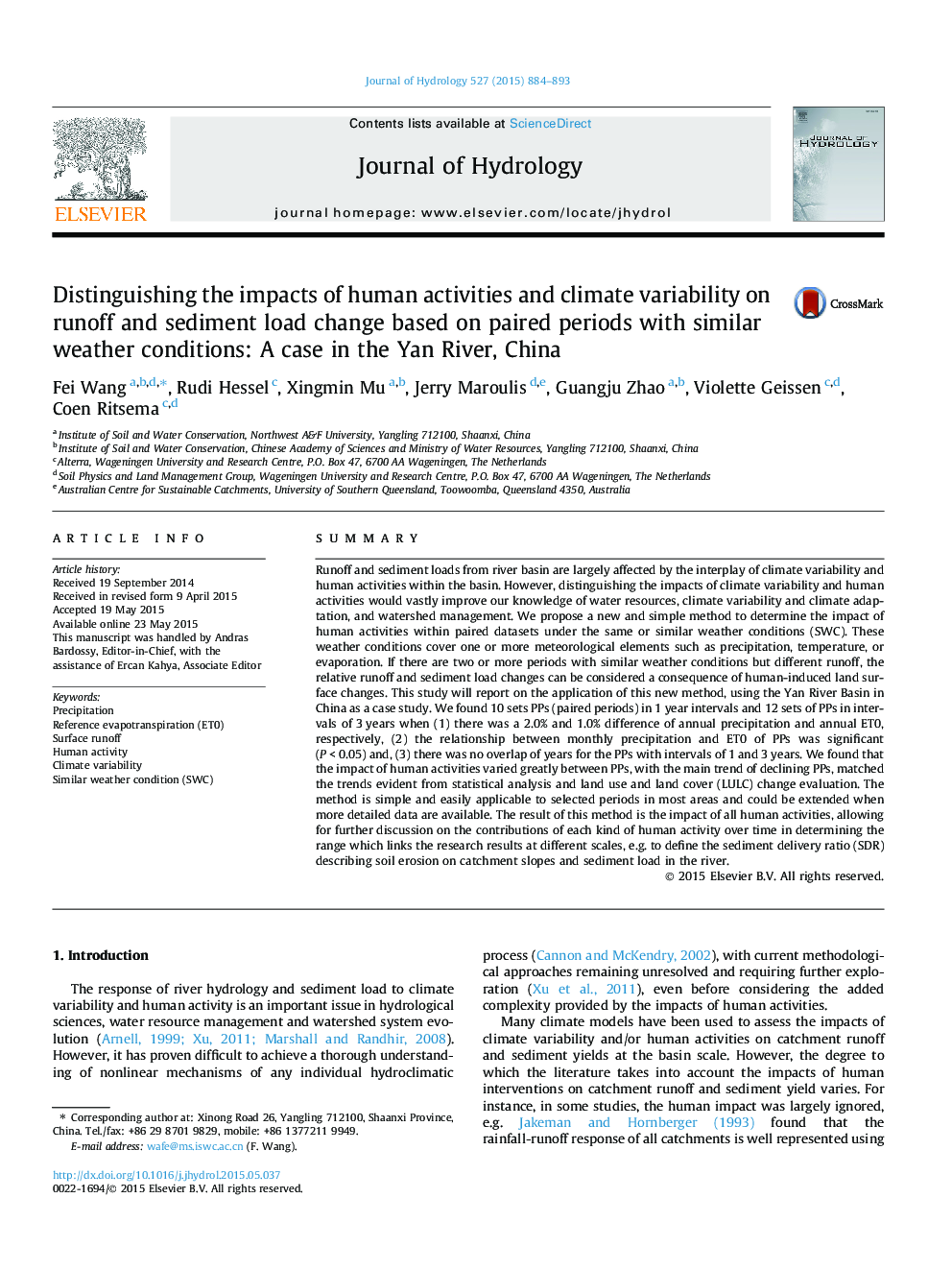| Article ID | Journal | Published Year | Pages | File Type |
|---|---|---|---|---|
| 6411203 | Journal of Hydrology | 2015 | 10 Pages |
â¢We develop a new method to assess the impact of human on river's character change.â¢Similar weather condition (SWC) is defined to fix the weather factors in this method.â¢Assuming the natural evaluation of landform, soil and vegetation is slow enough.â¢Runoff and sediment load differences within paired periods with SWC induced by human.â¢The method is simple but robust, and extendable when using more detailed data.
SummaryRunoff and sediment loads from river basin are largely affected by the interplay of climate variability and human activities within the basin. However, distinguishing the impacts of climate variability and human activities would vastly improve our knowledge of water resources, climate variability and climate adaptation, and watershed management. We propose a new and simple method to determine the impact of human activities within paired datasets under the same or similar weather conditions (SWC). These weather conditions cover one or more meteorological elements such as precipitation, temperature, or evaporation. If there are two or more periods with similar weather conditions but different runoff, the relative runoff and sediment load changes can be considered a consequence of human-induced land surface changes. This study will report on the application of this new method, using the Yan River Basin in China as a case study. We found 10 sets PPs (paired periods) in 1Â year intervals and 12 sets of PPs in intervals of 3Â years when (1) there was a 2.0% and 1.0% difference of annual precipitation and annual ET0, respectively, (2) the relationship between monthly precipitation and ET0 of PPs was significant (PÂ <Â 0.05) and, (3) there was no overlap of years for the PPs with intervals of 1 and 3Â years. We found that the impact of human activities varied greatly between PPs, with the main trend of declining PPs, matched the trends evident from statistical analysis and land use and land cover (LULC) change evaluation. The method is simple and easily applicable to selected periods in most areas and could be extended when more detailed data are available. The result of this method is the impact of all human activities, allowing for further discussion on the contributions of each kind of human activity over time in determining the range which links the research results at different scales, e.g. to define the sediment delivery ratio (SDR) describing soil erosion on catchment slopes and sediment load in the river.
Graphical abstractDownload full-size image
